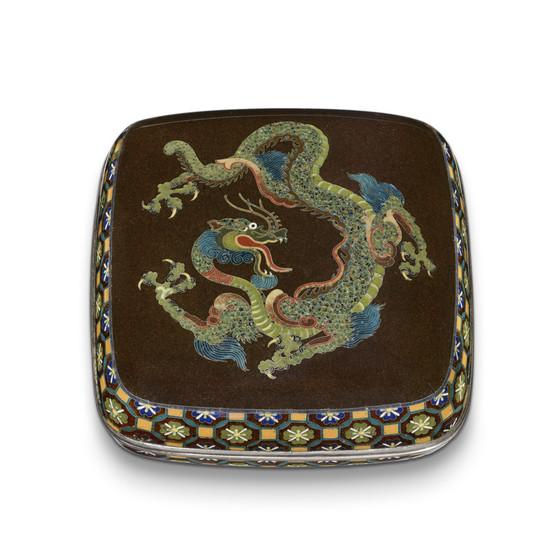Namikawa Yasuyuki (1868–1912) is considered perhaps the finest artist in the history of cloisonné enamels, both inside and outside Japan. Cloisonné is made by applying groundglass pastes of different colors, typically separated by thin metal wires (gold or silver for Yasuyuki) to a copper core; the object is then fired in a kiln. This process is then repeated over and over; at the end, the object is then meticulously polished down to a glossy glass-like surface. Self taught, Yasuyuki developed into an artist of supreme skill who used revolutionary technical innovations of his own making, and who gained worldwide fame for his elegant and intricate designs. In Japan, he was awarded the highly prestigious title Teishitsu gigei’in (Artist to the Imperial Household). In the West, Yasuyuki’s work was widely known through publication in art journals and by award-winning displays in the World Fairs held in Europe and the United States in the late 19th and early 20th centuries. Dating from the peak of his career, this incense container depicts a powerful dragon in a multitude of vivid hues, floating over a deep-chocolate background. LACMA is fortunate to possess the largest museum collection of Namikawa Yasuyuki’s work in the United States. Part of a generous gift to the museum by Donald K. Gerber and Sueann E. Sherry, this stunning work will be featured in the exhibition Polished to Perfection: Japanese Cloisonné from the Collection of Donald K. Gerber and Sueann E. Sherry, opening in the Pavilion for Japanese Art on May 28, 2017.

Namikawa Yasuyuki, IncenseContainer (kōgō) with Design of Dragon, c. 1900–05, Los Angeles County Museum of Art, gift from the Japanese Cloisonné Enamels Collection of Donald K. Gerber and Sueann E. Sherry, photo © Museum Associates/LACMA


